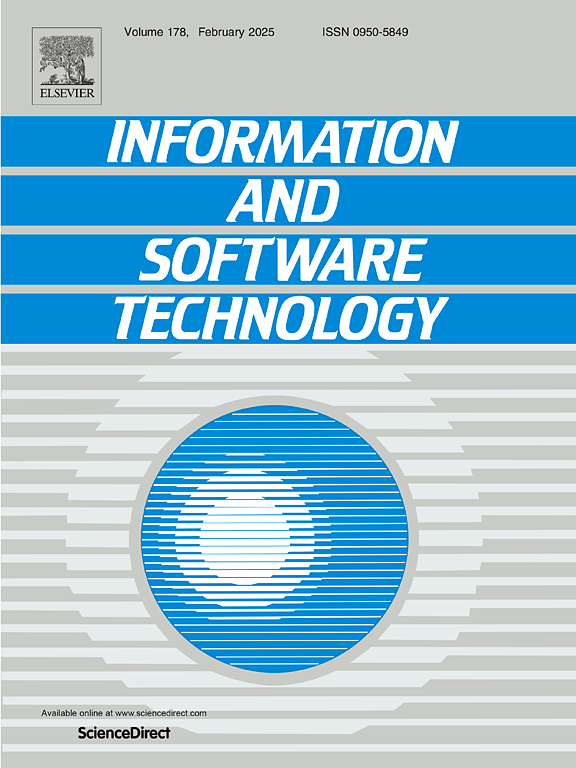Migration of monolithic systems to microservices: A systematic mapping study
IF 4.3
2区 计算机科学
Q2 COMPUTER SCIENCE, INFORMATION SYSTEMS
引用次数: 0
Abstract
Context:
The popularity of microservices architecture has grown due to its ability to address monolithic architecture issues, such as limited scalability, hard maintenance, and technological dependence. Nonetheless, the migration of monolith systems to microservices is complex. Therefore, methodologies and techniques are needed to facilitate migration and support practitioners and software architects.
Objective:
The objective of this study is to investigate cases of application migration, microservices identification techniques, tools used during migration, factors that promote migration, as well as issues and benefits of the migration.
Method:
We have conducted this SMS following the guidelines established by Kitchenham and Petersen. The research objective was defined using part of the Goal-Question-Metric model and the Population, Intervention, and Outcome criteria. From 1546 studies that were retrieved from the search execution, 114 were selected and analyzed to answer the research questions.
Results:
This SMS contributes with (i) a migration process proposal based on migration cases, (ii) a characterization of migration techniques based on different criteria, (iii) an analysis of tools to support migration, (iv) the identification of migration drivers, and (v) an exploration of migration issues as well as benefits.
Conclusion:
This SMS sheds light on the complexity and variability of migrating monolithic systems to microservices, as well as the limited number of migration tools. While scalability and maintenance drive migration, few studies assess them. Key challenges include microservices communication and database migration, with most research focusing primarily on monolith decomposition. Despite these difficulties, migration offers benefits, particularly in scalability and maintainability.
从单体系统向微服务迁移:系统映射研究
背景:微服务架构能够解决单体架构的问题,如有限的可扩展性、难以维护和技术依赖性等,因此越来越受欢迎。然而,从单体系统向微服务的迁移非常复杂。目标:本研究的目标是调查应用迁移案例、微服务识别技术、迁移过程中使用的工具、促进迁移的因素,以及迁移过程中的问题和好处。研究目标是根据目标-问题-度量模型的一部分以及人口、干预和结果标准确定的。结果:本 SMS 的贡献包括:(i) 基于迁移案例的迁移流程建议;(ii) 基于不同标准的迁移技术特征;(iii) 对支持迁移的工具的分析;(iv) 迁移驱动因素的识别;以及 (v) 对迁移问题和好处的探讨。虽然可扩展性和可维护性是迁移的驱动因素,但很少有研究对其进行评估。主要挑战包括微服务通信和数据库迁移,而大多数研究主要关注单体分解。尽管存在这些困难,迁移仍能带来好处,尤其是在可扩展性和可维护性方面。
本文章由计算机程序翻译,如有差异,请以英文原文为准。
求助全文
约1分钟内获得全文
求助全文
来源期刊

Information and Software Technology
工程技术-计算机:软件工程
CiteScore
9.10
自引率
7.70%
发文量
164
审稿时长
9.6 weeks
期刊介绍:
Information and Software Technology is the international archival journal focusing on research and experience that contributes to the improvement of software development practices. The journal''s scope includes methods and techniques to better engineer software and manage its development. Articles submitted for review should have a clear component of software engineering or address ways to improve the engineering and management of software development. Areas covered by the journal include:
• Software management, quality and metrics,
• Software processes,
• Software architecture, modelling, specification, design and programming
• Functional and non-functional software requirements
• Software testing and verification & validation
• Empirical studies of all aspects of engineering and managing software development
Short Communications is a new section dedicated to short papers addressing new ideas, controversial opinions, "Negative" results and much more. Read the Guide for authors for more information.
The journal encourages and welcomes submissions of systematic literature studies (reviews and maps) within the scope of the journal. Information and Software Technology is the premiere outlet for systematic literature studies in software engineering.
 求助内容:
求助内容: 应助结果提醒方式:
应助结果提醒方式:


